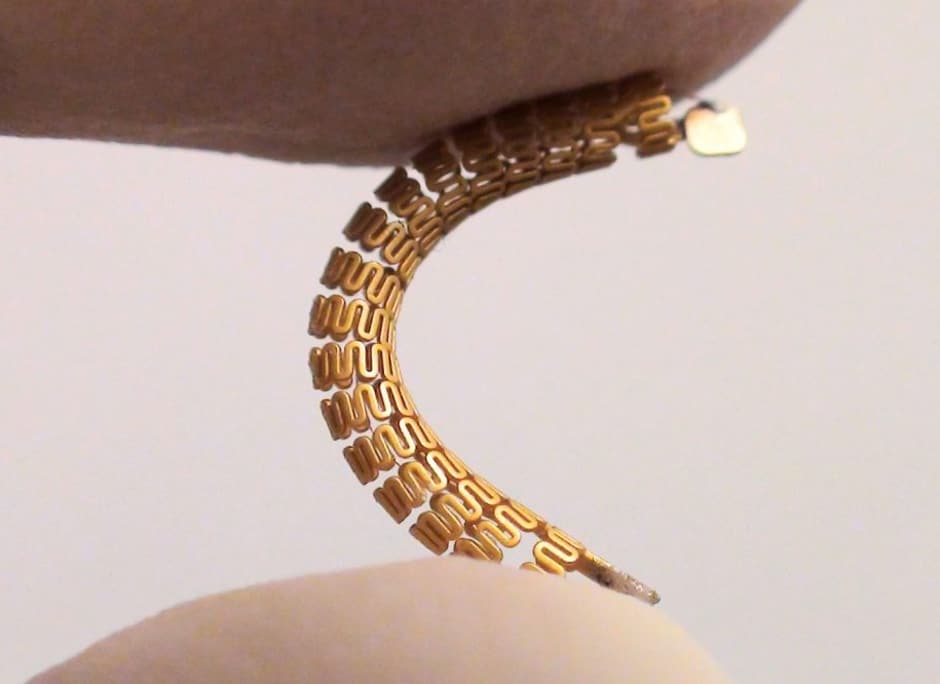Smart stent feels the squeeze to alert doctors and keep patients safe
Engineers have developed a so-called smart stent that detects changes in blood flow through an artery, an advance that could help doctors monitor their patient’s health more easily.

Stents are implanted to keep arteries open and prevent heart attack, but a third of patients experience restenosis – or renewed narrowing of the artery – which can lead to complications and the need for further medical intervention.
Now, a team led by University of British Columbia (UBC) electrical and computer engineering professor Kenichi Takahata has developed a “smart stent” that monitors subtle changes in the flow of blood through the artery, detecting the narrowing in its earliest stages and making early diagnosis and treatment possible.
“We modified a stent to function as a miniature antenna and added a special micro-sensor that we developed to continuously track blood flow. The data can then be sent wirelessly to an external reader, providing constantly updated information on the artery’s condition,” said Takahata.
The device is said to use medical-grade stainless steel and looks similar to most commercial stents. It is also the first angioplasty-ready smart stent, so it can be implanted using current medical procedures without modifications.
Register now to continue reading
Thanks for visiting The Engineer. You’ve now reached your monthly limit of news stories. Register for free to unlock unlimited access to all of our news coverage, as well as premium content including opinion, in-depth features and special reports.
Benefits of registering
-
In-depth insights and coverage of key emerging trends
-
Unrestricted access to special reports throughout the year
-
Daily technology news delivered straight to your inbox










National Gas receives funding to develop Gravitricity underground hydrogen storage system
One single rock salt mine - Winsford - has 23 <i>MILLION </i>cubic metres of void and even allowing for 10% of that void set aside for hazardous waste...